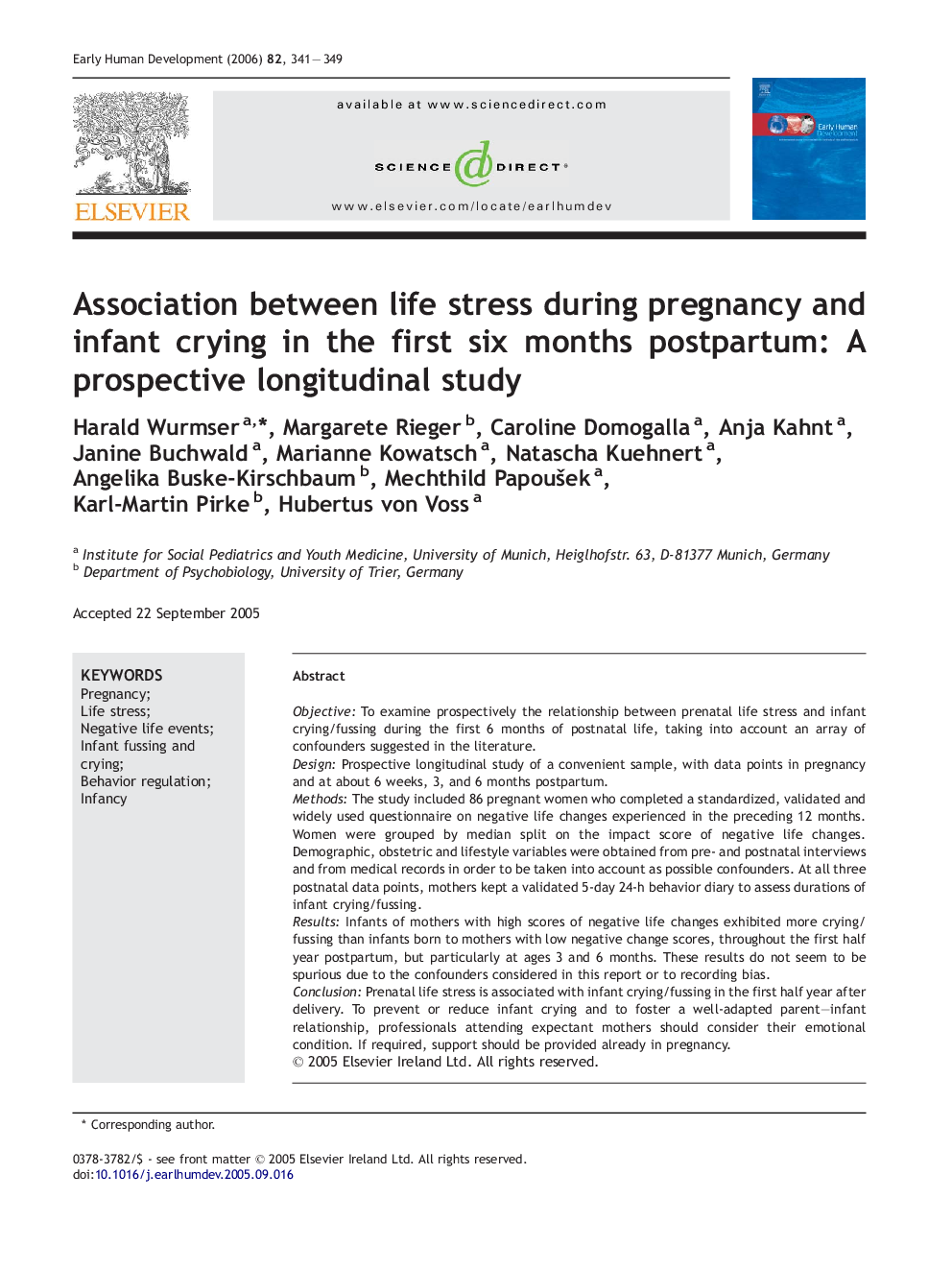| Article ID | Journal | Published Year | Pages | File Type |
|---|---|---|---|---|
| 3918404 | Early Human Development | 2006 | 9 Pages |
ObjectiveTo examine prospectively the relationship between prenatal life stress and infant crying/fussing during the first 6 months of postnatal life, taking into account an array of confounders suggested in the literature.DesignProspective longitudinal study of a convenient sample, with data points in pregnancy and at about 6 weeks, 3, and 6 months postpartum.MethodsThe study included 86 pregnant women who completed a standardized, validated and widely used questionnaire on negative life changes experienced in the preceding 12 months. Women were grouped by median split on the impact score of negative life changes. Demographic, obstetric and lifestyle variables were obtained from pre- and postnatal interviews and from medical records in order to be taken into account as possible confounders. At all three postnatal data points, mothers kept a validated 5-day 24-h behavior diary to assess durations of infant crying/fussing.ResultsInfants of mothers with high scores of negative life changes exhibited more crying/fussing than infants born to mothers with low negative change scores, throughout the first half year postpartum, but particularly at ages 3 and 6 months. These results do not seem to be spurious due to the confounders considered in this report or to recording bias.ConclusionPrenatal life stress is associated with infant crying/fussing in the first half year after delivery. To prevent or reduce infant crying and to foster a well-adapted parent–infant relationship, professionals attending expectant mothers should consider their emotional condition. If required, support should be provided already in pregnancy.
